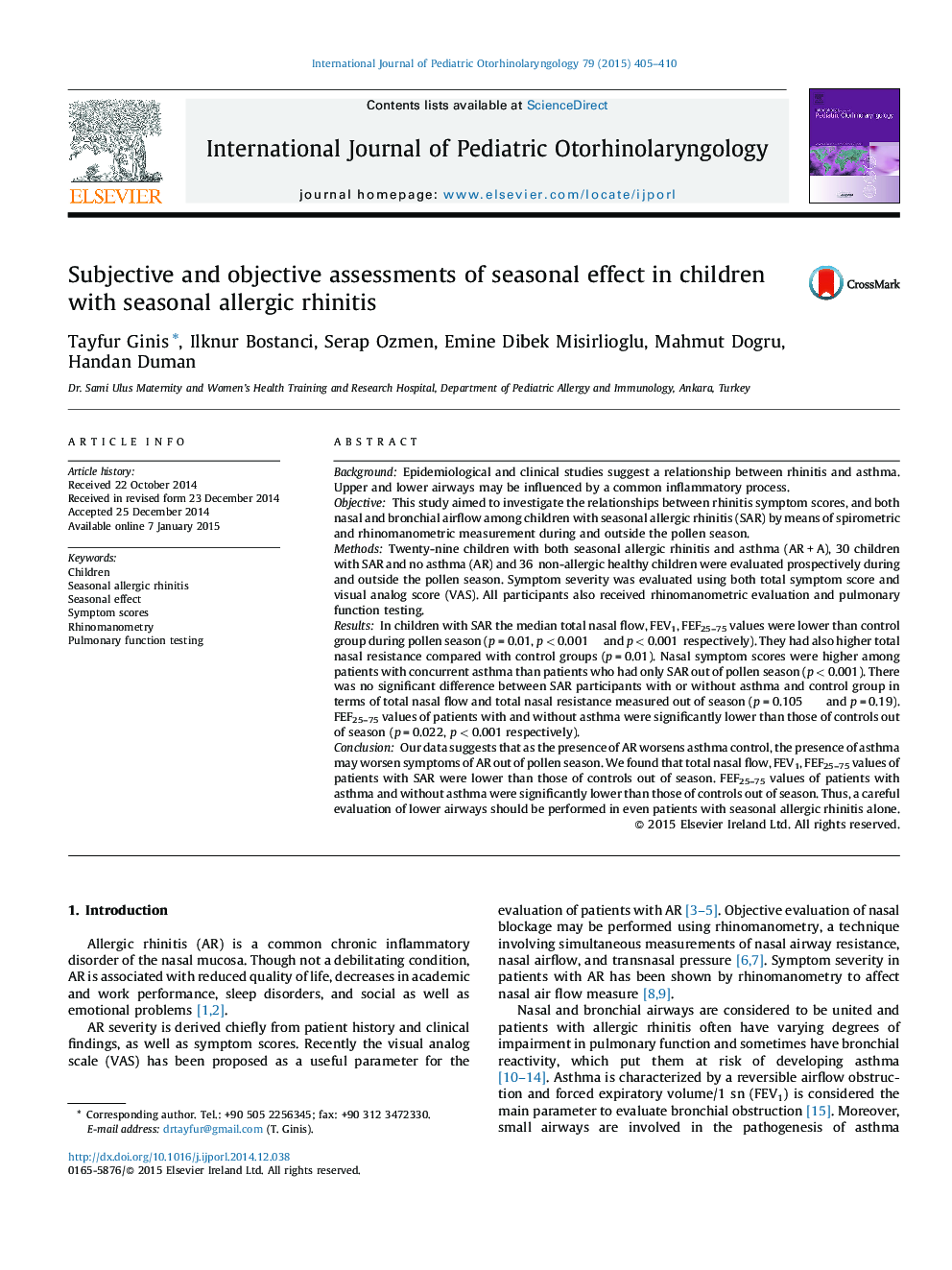| کد مقاله | کد نشریه | سال انتشار | مقاله انگلیسی | نسخه تمام متن |
|---|---|---|---|---|
| 4111978 | 1605998 | 2015 | 6 صفحه PDF | دانلود رایگان |
BackgroundEpidemiological and clinical studies suggest a relationship between rhinitis and asthma. Upper and lower airways may be influenced by a common inflammatory process.ObjectiveThis study aimed to investigate the relationships between rhinitis symptom scores, and both nasal and bronchial airflow among children with seasonal allergic rhinitis (SAR) by means of spirometric and rhinomanometric measurement during and outside the pollen season.MethodsTwenty-nine children with both seasonal allergic rhinitis and asthma (AR + A), 30 children with SAR and no asthma (AR) and 36 non-allergic healthy children were evaluated prospectively during and outside the pollen season. Symptom severity was evaluated using both total symptom score and visual analog score (VAS). All participants also received rhinomanometric evaluation and pulmonary function testing.ResultsIn children with SAR the median total nasal flow, FEV1, FEF25–75 values were lower than control group during pollen season (p = 0.01, p < 0.001 and p < 0.001 respectively). They had also higher total nasal resistance compared with control groups (p = 0.01). Nasal symptom scores were higher among patients with concurrent asthma than patients who had only SAR out of pollen season (p < 0.001). There was no significant difference between SAR participants with or without asthma and control group in terms of total nasal flow and total nasal resistance measured out of season (p = 0.105 and p = 0.19). FEF25–75 values of patients with and without asthma were significantly lower than those of controls out of season (p = 0.022, p < 0.001 respectively).ConclusionOur data suggests that as the presence of AR worsens asthma control, the presence of asthma may worsen symptoms of AR out of pollen season. We found that total nasal flow, FEV1, FEF25–75 values of patients with SAR were lower than those of controls out of season. FEF25–75 values of patients with asthma and without asthma were significantly lower than those of controls out of season. Thus, a careful evaluation of lower airways should be performed in even patients with seasonal allergic rhinitis alone.
Journal: International Journal of Pediatric Otorhinolaryngology - Volume 79, Issue 3, March 2015, Pages 405–410
